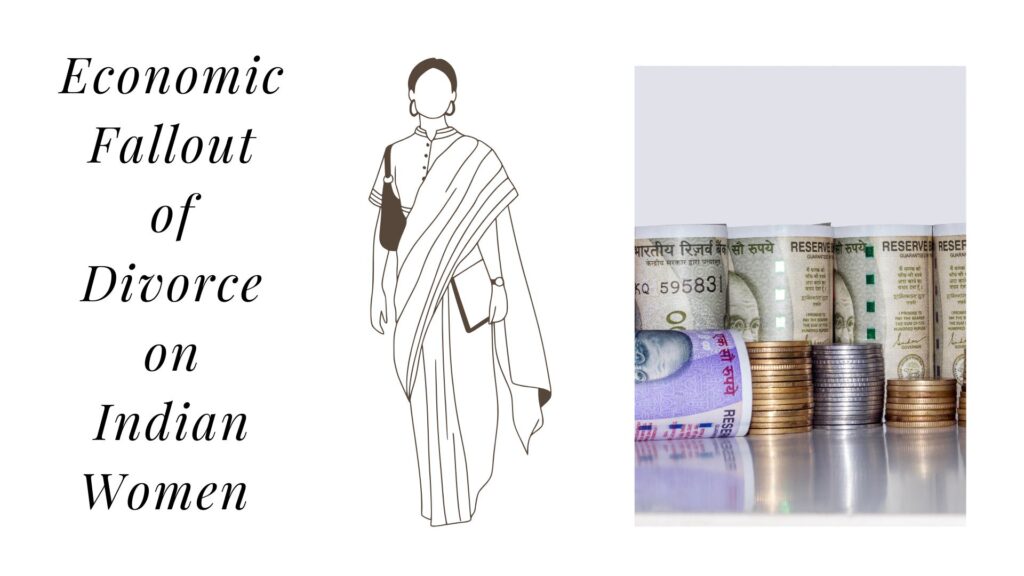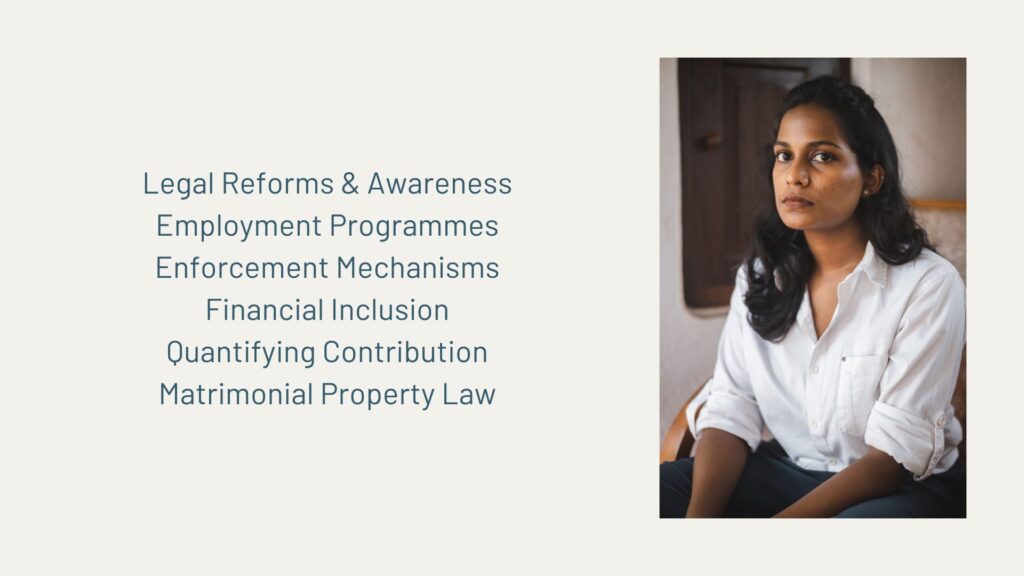Explaining Financial Insecurity after Divorce Faced by Many Indian Women

The Shah Bano Case
The Shah Bano Case was controversial in the late 1970s to early 1980s. It focused on the right of a divorced Muslim woman to claim maintenance from her former husband under Section 125 of the CrPC, a secular Indian law. Shah Bano, unable to support herself after the divorce, sought maintenance from her ex-husband. The Supreme Court ruled in her favour, stating that Section 125 applied to all citizens, including Muslims. The court’s judgment said the obligation to provide maintenance extended beyond the iddat period (the waiting period after divorce) mentioned in Muslim Personal Law.
This ruling caused nationwide controversy, with some groups saying it interfered with Muslim Personal Law. This led to political debates and mobilisation. In response, the government passed the Muslim Women (Protection of Rights on Divorce) Act in 1986, which limited maintenance for divorced Muslim women mainly to the iddat period, reversing the Supreme Court’s decision.
The Muslim Women Act of 1986 was modified in later years. The case is mentioned here to highlight the difficulty women in India face in getting maintenance or alimony after a divorce. To read more on the case, you can visit this link here. While we spoke about the general impact of divorce on families and children, in this article we will be discussing financial insecurity after divorce.
Socio-Economic Context and Gender Disparities
India’s socio-economic context is marked by gender disparities, limited financial autonomy for women, and a gender pay gap. According to the Global Gender Gap Report 2021, India ranks 140th out of 156 countries in terms of gender parity. The gender pay gap in India is one of the highest in the world, with women earning 20% less than men on average. A report from the National Statistical Office (NSO) in March 2023 indicates that while women own 36.4% of the total individual bank accounts in India, they hold only 20.8% of the total money deposited in these accounts, showing a disparity in the amount of money women have compared to men.
Despite legal provisions for financial security, divorced women often face severe economic hardship due to inadequate property rights, inconsistent maintenance laws, problematic alimony settlements, and socio-economic inequalities.
Property Rights and Legal Framework
In India, property rights for women within marriage and upon divorce are not uniform or equitable. Personal laws, based on religious affiliation, govern these rights, leading to a fragmented and often discriminatory legal landscape.
Hindu women have some rights to stridhan (gifts and property given to them at marriage) and a share in ancestral property, but their claim on marital property acquired during the marriage is often weak. Although the Hindu Succession Act of 1956 was amended in 2005 to grant daughters equal rights to ancestral property, the implementation of these laws is weak. Many women are unaware of their legal rights, and societal norms often discourage them from claiming their share of property.
Muslim women have rights to mehr (dower) and maintenance during iddat, but their property rights are limited and subject to interpretation under Muslim Personal Law. Christian and Parsi women are governed by their respective personal laws, which also have their own complexities. In short, Indian women face challenges in asserting their property rights after divorce.
A study by Jhuma Sen observes that despite legal reforms, most Indian women hold almost no property in their name. This is made worse by the “separate property regime” inherited from English law, where assets acquired during marriage are not automatically jointly owned. The contribution of a homemaker, mostly women, is rarely recognised in property division, leaving them economically vulnerable after divorce.
Maintenance and Alimony Laws
The legal framework for maintenance and alimony in India is governed by various personal laws, including the Hindu Marriage Act, 1955 (Sections 24 and 25), and the Protection of Women from Domestic Violence Act, 2005. Section 125 of the Criminal Procedure Code (CrPC) offers maintenance to wives, regardless of religion. While these laws aim to provide financial support to divorced women, enforcement is often difficult.
Practical Challenges and Financial Insecurity
Courts often award maintenance amounts that are insufficient to maintain a divorced woman’s previous standard of living, especially considering inflation and rising living costs. Enforcing maintenance orders can be a long legal battle. Husbands may delay payments or find ways to avoid their obligations, leaving women in financial distress. The social stigma of seeking maintenance can deter women from claiming their rightful dues. They may fear social ostracization or prolonged legal battles. Societal biases can influence judicial decisions, with women’s claims for substantial alimony being viewed unfavourably, especially if they are educated or have some earning capacity, even if it is significantly lower than their husband’s.
Many women, especially those who have been homemakers, lack the skills and experience needed to enter the workforce. The gender pay gap means women earn significantly less than men for similar work, limiting their ability to build financial security independently. Societal norms often restrict women’s access to education, employment opportunities, and financial autonomy, making them heavily reliant on marital support. Divorce takes away a woman’s primary source of economic sustenance.
The stigma of divorce further limits employment opportunities. Moreover, the lack of access to credit and financial services makes it difficult for women to start businesses or become financially independent. Research shows that increasing divorce rates are linked to increasing women’s employment, especially in urban areas. While economic independence can empower women to leave unhappy marriages, it does not automatically lead to economic security after divorce, given the existing gender pay disparities and societal disadvantages.
Remedial Measures

To address the economic fallout of divorce on Indian women, a multi-pronged approach is needed:
- Legal Reforms and Awareness Campaigns: Comprehensive legal reforms are needed to ensure women’s property rights are upheld. Awareness campaigns should educate women about their legal rights and available resources.
- Skill Development and Employment Programmes: Skill development programmes could help divorced women gain employment or start their own businesses. The government and NGOs can provide vocational training and financial literacy programmes.
- Strengthening Enforcement Mechanisms: Enforcement of maintenance and alimony laws needs to be strengthened. Special courts or fast-track mechanisms could ensure timely resolution of cases. Courts should prevent delays and evasion of maintenance orders and consider the long-term economic impact of divorce on women, especially homemakers.
- Promoting Financial Inclusion: Efforts should be made to promote financial inclusion among women, including increasing access to bank accounts, credit, and insurance products specifically meant for women.
- Quantifying Homemaker Contributions: Legal frameworks should recognise and quantify the economic value of a homemaker’s contributions, considering factors like childcare, household management, and emotional support as tangible contributions that warrant a share in marital assets. This is already done to some extent, but not enough.
- Matrimonial Property Law: India needs a uniform matrimonial property law that recognises marital property as jointly owned by both spouses, regardless of whose name it is purchased in. This law should acknowledge the contributions of both partners, including homemaking, to the acquisition of assets during marriage and ensure equitable division upon divorce.
Conclusion
The economic fallout of divorce on Indian women is a complex issue that needs urgent attention. While legal provisions exist to protect women’s rights, their implementation remains weak. Addressing the socio-economic challenges faced by divorced women requires a joint effort from the government, civil society, and the private sector. By empowering women with knowledge, skills, and resources, we can help them face the economic challenges that emerge after a divorce.
The financial insecurity after divorce, faced by Indian women, is a significant issue that requires urgent attention and collective action. Rematch App offers resources to help divorced women. Join our community and take a step towards empowering women. Download our app now and make a difference!
References
Agnes, Flavia. “From Shahbano to Kausar Bano – Contextualizing the ‘Muslim Woman’ within a communalised polity.” Feminist Law Archives. October 5, 2006. http://feministlawarchives.pldindia.org/wp-content/uploads/from-shahbano-to-kausar-bano-contextualizing-the-muslim-woman.pdf?
Akhtar, Md Ehtesham. “Social and Economic Problems of Divorced Women with Special Reference to Sangam Vihar Delhi.” Research on Humanities and Social Sciences 6, no. 21 (2016): 13. Accessed February 20, 2025. https://www.iiste.org/Journals/index.php/RHSS/article/view/34265.
Sen, Jhuma. “Matrimonial Property Rights: Is India Ready for a Law?” Journal of Indian Law and Society 1 (2009): 129-151. Accessed February 20, 2025. https://docs.manupatra.in/newsline/articles/Upload/F2587F8B-1162-415A-8E76-6F4019530939.pdf.

